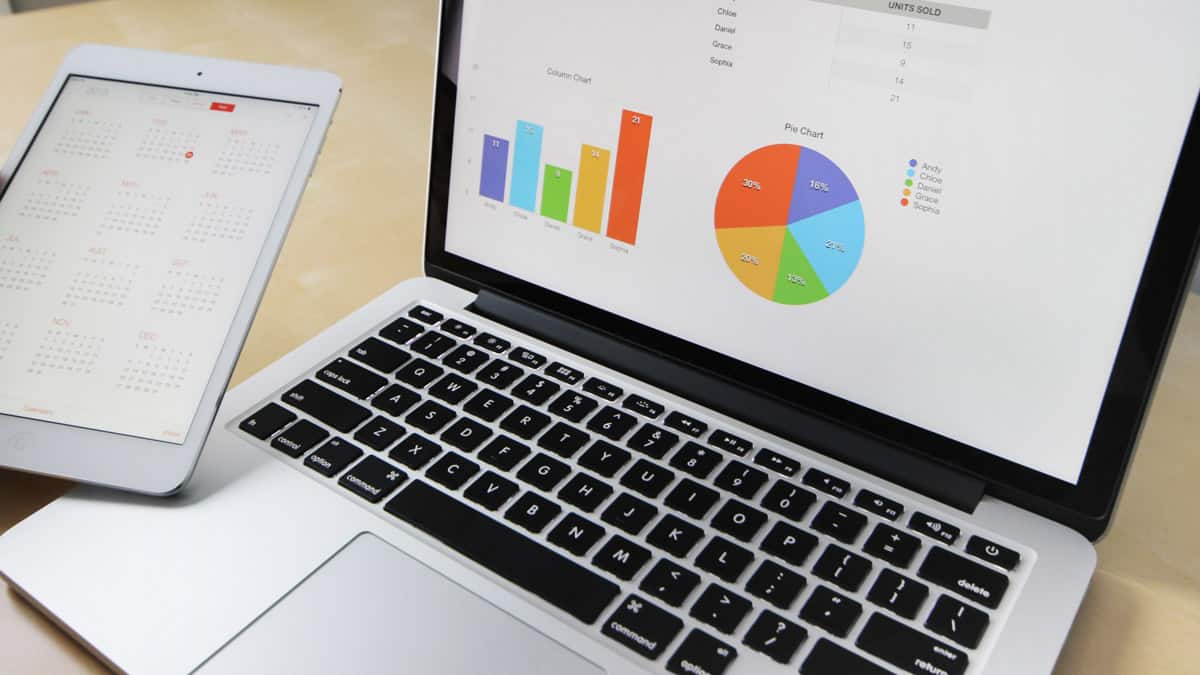How to Write a Profit and Loss Statement
Many small business owners benefit from looking at their monthly Profit & Loss (P&L) statement. Learn how to interpret your P&L.

How to Create a Profit and Loss Statement for Your Growing Business
A profit and loss (P&L) statement — also called an income statement — is one of the most important financial documents a business owner can use. It shows you how much money your business made, how much you spent, and what you actually profited (or lost) over a given period. With this insight, you can track trends, manage budgets, plan for taxes, and make smart financial decisions. Whether you’re running a mobile food business, launching an online shop, managing a nonprofit, or scaling a local service company, this guide will walk you through the fundamentals of how to build, read, and apply a P&L.
What Is a Profit and Loss Statement?
A profit & loss (P&L) is one of the three fundamental financial documents. In the simplest terms, how much money your business makes is the difference between how much money you bring in and how much you spend. If income exceeds expenses, you’re making a profit. If not, you’ve got a loss on your hands. A profit and loss (P&L) statement will put all the numbers in one place so you know where you stand and can make any adjustments that are necessary to bring up your income or tone down expenses. P&L statements can be done for any given period of time, but it’s helpful to review your P&L monthly or at least quarterly.
A P&L report includes:
Revenue: Total income generated from your core business activities;
Cost of Goods Sold (COGS): Direct costs involved in producing your goods or services;
Operating Expenses: Overhead costs like rent, payroll, marketing, and utilities; Other
Income/Expenses: Financial earnings or losses from non-core activities;
Net Profit or Loss: Your true earnings after all expenses have been deducted. The P&L is like your business’s financial report card. It answers a critical question: Is my business actually making money?
Why Profit and Loss Statements Are Essential for Business Success
According to SCORE and a U.S. Bank study, 82% of small business failures are due to poor cash flow management or a lack of financial understanding. Regularly reviewing a P&L helps avoid this risk. Additionally, businesses that consistently monitor their financial performance are more likely to succeed. QuickBooks reports that 30% of businesses that track their performance monthly are more likely to experience steady growth. Your P&L empowers you to: Track profitability and adjust pricing; Control spending and find cost-saving opportunities; Prepare financial documents for loans or investors; Set and evaluate strategic goals; Identify seasonal trends. It’s not just a finance tool — it’s a growth strategy.
Comparing the P&L to Other Key Financial Reports
A complete understanding of your business finances involves reviewing multiple reports. Here’s how a P&L compares to other financial statements:
|
Report |
What It Shows |
When to Use It |
|
Profit & Loss (P&L) |
Revenue – expenses = profit or loss |
Monthly tracking & growth |
|
Balance Sheet |
Assets, liabilities, and equity at a point in time |
Annual reports, loan readiness |
|
Cash Flow Statement |
Cash in vs. cash out |
Weekly/monthly cash planning |
The P&L is particularly useful because it reflects your operational performance.
How Often Should You Create and Review a P&L?
Monthly: To catch issues early, like overspending or low profit margins; Quarterly: To evaluate trends and plan major business changes; Annually: To prepare for taxes and create a roadmap for the next year. Many lenders require 12–36 months of P&L reports when considering loan applications. Reviewing your statement regularly gives you more control and visibility over your business’s financial health.
Different Types of Profit and Loss Statements
Single-Step P&L: This format is straightforward: total revenue minus total expenses equals your net income. It’s ideal for small businesses with simple structures.
Multi-Step P&L: This method breaks financial activity into three levels: Gross Profit = Revenue – COGS; Operating Income = Gross Profit – Operating Expenses; Net Profit = Operating Income ± Other Income/Expenses. This format provides more insight into where profits are coming from and where costs are accumulating.
Cash Basis P&L: Records revenue and expenses only when cash actually changes hands. Simple to manage but may not reflect true financial performance.
Accrual Basis P&L: Records income when earned and expenses when incurred, regardless of when money is exchanged. Preferred for accuracy and forecasting.
Tools to Create a Profit and Loss Statement
You can build a P&L using basic spreadsheets or specialized accounting software. Popular options include: Excel: Best for customizable templates; Google Sheets: Accessible and collaborative; QuickBooks: Ideal for automated small business accounting; Wave: Free and easy to use for new businesses; Xero: Comprehensive for scaling operations.
Step-by-Step: How to Build a P&L Statement
Step 1: Choose a Reporting Period — Determine whether you’re reviewing your numbers monthly, quarterly, or annually.
Step 2: Track All Revenue — Include all income from sales, services, rentals, subscriptions, etc. Consider separating recurring vs. one-time sources.
Step 3: Calculate Cost of Goods Sold (COGS) — These are the direct costs to deliver your product or service: Inventory; Supplies; Manufacturing labor; Packaging or delivery. Gross Profit = Revenue – COGS
Step 4: Add Operating Expenses — These are recurring business expenses not tied to specific product sales: Rent and utilities; Salaries and payroll taxes; Marketing and advertising; Subscriptions (e.g., software, SaaS tools); Insurance. Operating Income = Gross Profit – Operating Expenses
Step 5: Account for Other Income and Expenses — These include: Investment returns; Bank interest or fees; Grants or donations (if applicable); Loan interest
Step 6: Calculate Net Profit (or Loss) — Net Profit = Operating Income ± Other Items. This final figure represents your business’s true bottom line.
Sample Monthly Profit and Loss Statement
|
Category |
Monthly Total |
|
Revenue |
$12,000 |
|
Cost of Goods Sold |
$4,000 |
|
Gross Profit |
$8,000 |
|
Operating Expenses |
$5,000 |
|
Operating Income |
$3,000 |
|
Other Expenses (Loan) |
$500 |
|
Net Profit |
$2,500 |
Real-World P&L Example: Cake Business
|
Line Item |
Annual Amount |
|
Revenue |
$5,000 |
|
COGS |
$800 |
|
Gross Profit |
$4,200 |
|
Expenses |
$2,500 |
|
Taxes |
$375 |
|
Net Profit |
$1,325 |
This example helps small business owners understand how P&Ls apply in real-life scenarios — even with low-volume operations.
How to Use a P&L to Drive Growth
Your profit and loss statement isn’t just a snapshot — it’s a growth tool. Here’s how to use it to improve operations: Benchmark profit margins and pricing against competitors; Reallocate budgets from low-performing activities; Plan staffing or equipment purchases with confidence; Anticipate seasonal demand and adjust strategies accordingly; Create data-driven funding proposals.
How to Analyze a P&L for Deeper Insight
Use these tools to break down and interpret your results: Vertical analysis: What % of your revenue goes to rent, payroll, or marketing? Horizontal analysis: Track progress by comparing month-to-month or year-over-year; Gross Margin = Gross Profit ÷ Revenue; Net Margin = Net Profit ÷ Revenue. Example: If Net Profit is $2,500 and Revenue is $12,000, your Net Margin = 20.8%
Why Reviewing Your P&L Regularly Pays Off
Consistent financial review helps: Prevent overspending; Improve forecasting accuracy; Stay loan-ready at all times; Reduce tax-time stress. Monthly reviews help you catch red flags and pivot when needed. Pair your P&L with a cash flow forecast to balance real-time spending against profitability.
About Accion Opportunity Fund
This guide was created by Accion Opportunity Fund (AOF) — a nonprofit CDFI dedicated to supporting small businesses with equitable access to capital, education, and mentorship. We support entrepreneurs by providing: Affordable small business loans with flexible repayment options; A comprehensive Resource Library for every business stage; Personalized Coaching and Business Advisement Programs for strategy and skills. With over 25 years of service, AOF is committed to helping underserved small businesses grow, thrive, and lead.
Ready to Take Action?
Let us help you build a stronger business: Apply for a Business Loan; Explore Educational Resources; Schedule a Free Coaching Session
Your profit and loss statement isn’t just paperwork. It’s a decision-making dashboard, a roadmap for growth, and your proof of progress.
P&L Frequently Asked Questions (FAQs)
What is the main purpose of a profit and loss statement?
A P&L helps you understand whether your business is making or losing money over a specific period by tracking revenue, costs, and expenses.
How often should I update my profit and loss statement?
Monthly updates are ideal for most businesses. Quarterly and annual reviews are also helpful for tracking progress and planning ahead.
Can I use a P&L to apply for a loan?
Yes. Lenders often require 12–36 months of P&L statements to evaluate your business’s profitability and financial health.
Do I need accounting software to create a P&L?
No, you can create one using Excel or Google Sheets, though accounting tools like QuickBooks or Wave can automate the process.
What’s the difference between gross profit and net profit?
Gross profit is revenue minus COGS, while net profit includes all operating and non-operating expenses.
What’s the best format to use for a P&L?
A multi-step P&L provides more detail and clarity, but single-step formats are fine for businesses with simple operations.
Is a P&L the same as a cash flow statement?
No. A P&L shows profitability, while a cash flow statement tracks how much cash enters and exits your business.
What should I do if my P&L shows a consistent loss?
Analyze spending, pricing, and revenue sources. It may be time to cut expenses, improve sales strategies, or seek guidance from a business coach.









